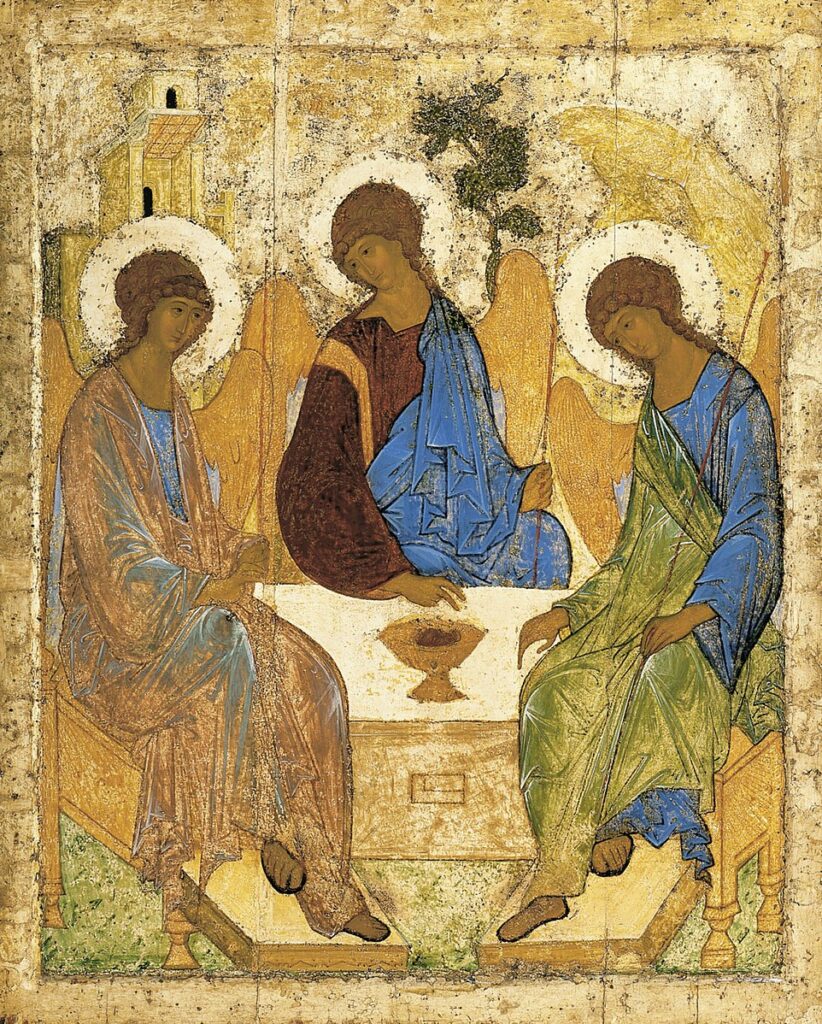
The Trinity, while one of the central components of Catholicism, is also one of the hardest to explain. There are three parts. The Father, The Son, and The Holy Spirit. While they all make up God. Think of your body. Your arms, legs, and head are all parts of your body. All of them make up your body though. The same way with the Trinity. The Father, Son, and The Holy Spirit are all distinct parts of God.
As the Catechism states “The Trinity is One. We do not confess three Gods, but one God in three persons, the “consubstantial Trinity”. The divine persons do not share the one divinity among themselves but each of them is God whole and entire: “The Father is that which the Son is, the Son that which the Father is, the Father and the Son that which the Holy Spirit is, i.e. by nature one God.” In the words of the Fourth Lateran Council (1215), “Each of the persons is that supreme reality, viz., the divine substance, essence or nature.”” ¹
This seems to fix a paradox in the gospel. Did God die so that God could act as atonement due to God for our transgressions? Well what if we look at this differently? The Son guided by the Holy Spirit gave his life to pay our debt due to the Father. This is in no way a promotion of modalism. Throughout the Bible we see the three persons acting independently of each other.
This doesn’t mean they’re three gods though. Jesus is God in the flesh, The Holy Spirit is what guides man to God, and the Father is what effectively orders the universe towards Gods perfect will. There may be three aspects acting independently. However, they all share one will. This one will is what makes up God. “For this reason the apostles confess Jesus to be the Word: “In the beginning was the Word, and the Word was with God, and the Word was God”; as “the image of the invisible God”; as the “radiance of the glory of God and the very stamp of his nature””. ²
¹CCC 253
²CCC 241
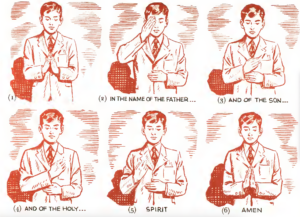
 First Sorrow: Mary Hears the prophecy of Simeon in the Temple
First Sorrow: Mary Hears the prophecy of Simeon in the Temple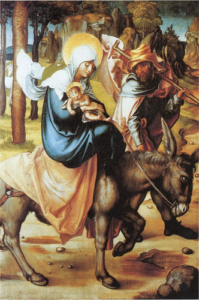 Second Sorrow: Mary flees with Joseph into Egypt to save Jesus
Second Sorrow: Mary flees with Joseph into Egypt to save Jesus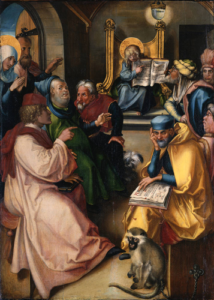 Third Sorrow: Mary loses Jesus and finds Him again in the Temple
Third Sorrow: Mary loses Jesus and finds Him again in the Temple Fourth Sorrow: Mary meets Jesus carrying the cross on the way to Calvary
Fourth Sorrow: Mary meets Jesus carrying the cross on the way to Calvary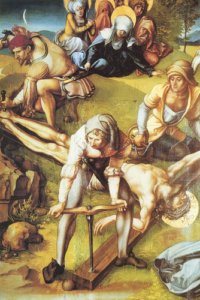 Fifth Sorrow: Mary is present at the Crucifixion and Death of Jesus
Fifth Sorrow: Mary is present at the Crucifixion and Death of Jesus Sixth Sorrow: Mary receives the dead body of Jesus in her arms
Sixth Sorrow: Mary receives the dead body of Jesus in her arms Seventh Sorrow: Mary accompanies Jesus to His Burial
Seventh Sorrow: Mary accompanies Jesus to His Burial